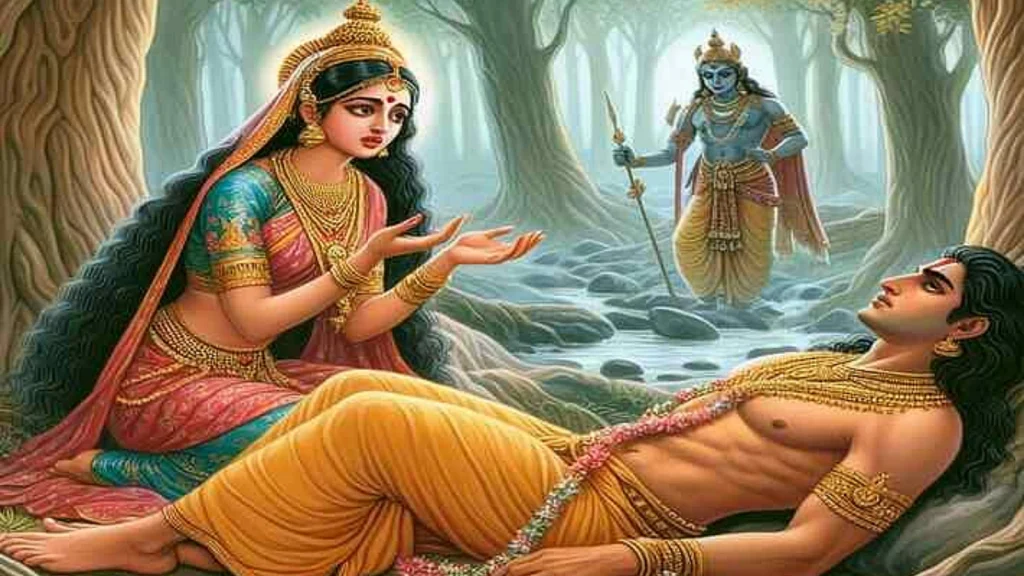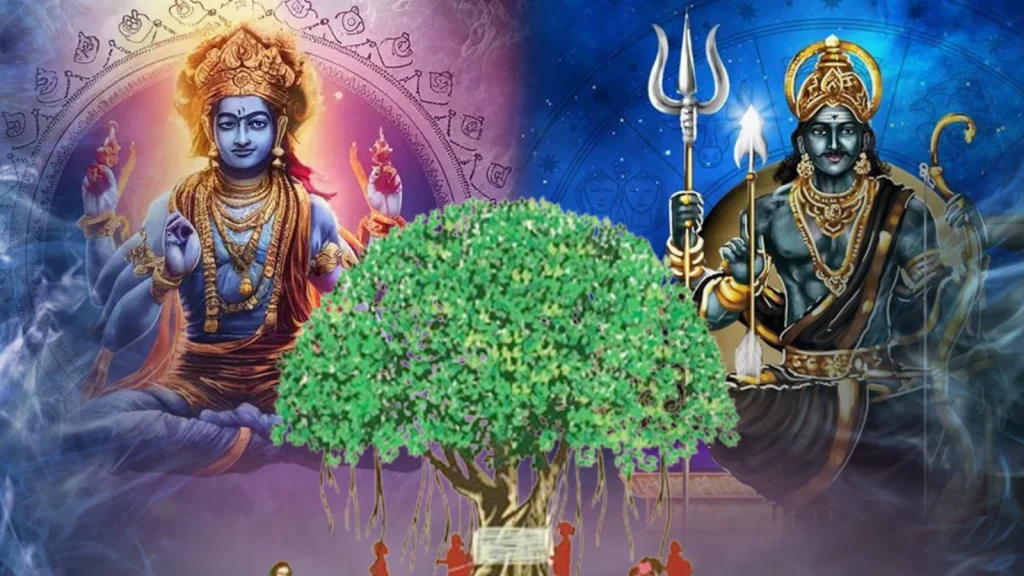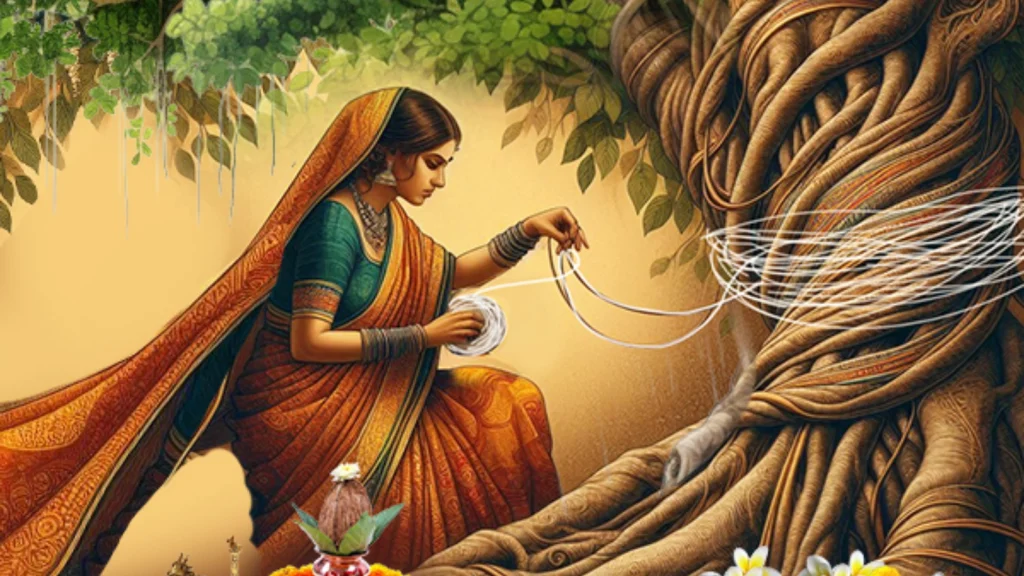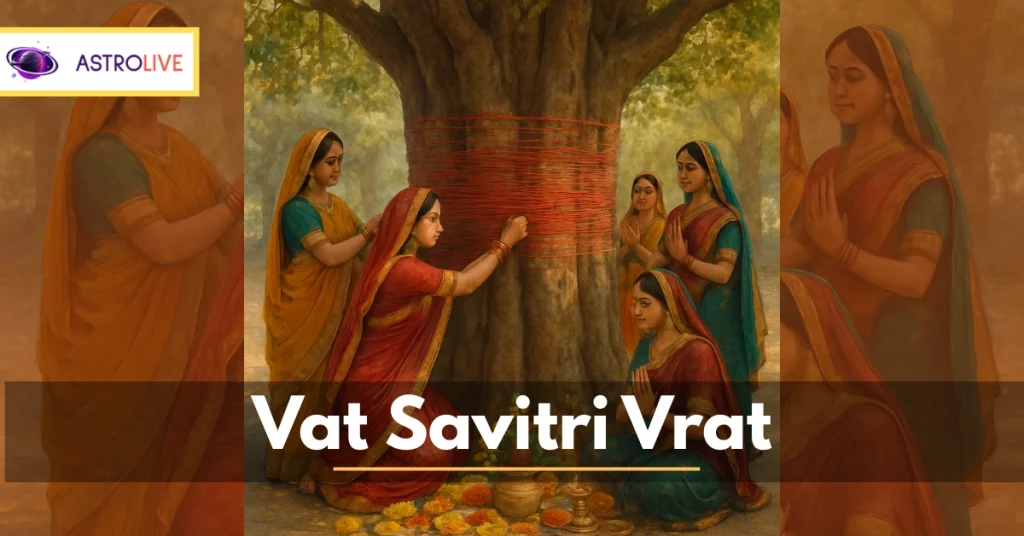Vat Savitri Vrat holds a sacred place in Hindu tradition, especially among married women in India. Celebrated with deep devotion and reverence, this vrat is more than a ritual; it is a spiritual experience. It reflects the timeless values of love, sacrifice, and unwavering faith of a wife toward her husband. As society evolves, some rituals fade away, but VatSavitri continues to be widely practiced and respected across regions.
In this blog, we’ll explore why this vrat is celebrated, when it is observed, how it is performed, what rituals are involved, and what blessings one can expect by observing it.
Savitri And Satyavan: The Mythological Heart Of Vatsavitri Vrat

The Vat Savitri Vrat draws its essence from the ancient story of Savitri and Satyavan, found in the epic Mahabharata. According to the legend, Savitri was a devoted wife who brought her husband Satyavan back to life through sheer willpower, wisdom, and prayer. Her unwavering devotion and eloquence moved even Yama, the God of Death, to grant her husband’s life back.
This tale is symbolic of the power of a woman’s love and the divine blessings that come from selfless devotion. The story reinforces that spiritual strength and purity of heart can overcome even death itself.
When Is VatSavitri Puja Celebrated?

Vat Savitri is observed on the Amavasya (new moon) day of the Hindu month of Jyeshtha, which typically falls in May or June as per the Gregorian calendar. The North Indian tradition observes the vrat on Jyeshtha Amavasya, while in Maharashtra, Gujarat, and some other parts of Western India, it is observed during the Jyeshtha Purnima (full moon).
Although the date may differ slightly depending on the region, the sentiment behind the vrat remains the same. It’s a day when married women fast and pray for the long life, well-being, and prosperity of their husbands.
The Importance Of The Banyan Tree In Vat Savitri
One of the most significant aspects of VatSavitri is the worship of the Banyan tree (Vat Vriksha). The tree represents the ‘Trimurti’, Brahma (creator), Vishnu (preserver), and Shiva (destroyer). It is considered a symbol of immortality and longevity in Hinduism.
During the vrat, women tie sacred threads around the trunk of the Banyan tree, walk around it in circles, and offer prayers. This ritual symbolizes the eternal bond between husband and wife, with the tree representing strength, stability, and life.
Also Read: Kundli Matching: A Guide To Finding True Compatibility
How To Celebrate Vat Savitri Vrat: Step-By-Step Rituals

Observing the Vatsavati Vrat involves a series of detailed rituals, each with deep spiritual meaning. Here’s a step-by-step guide to how it is traditionally celebrated:
Pre-Dawn Preparations:
The observance of Vat Savitri Vrat begins before sunrise, with women waking up early to cleanse themselves and prepare for the day’s rituals. After bathing, they dress in traditional attire, typically favoring auspicious colors such as red or yellow, which symbolize prosperity and devotion.
To signify their married status, they wear bangles, bindis, and mangalsutras. Many women also apply intricate henna designs on their hands, further enhancing the spiritual and festive atmosphere of the vrat.
Observing The Fast:
One of the most significant aspects of Vat Savitri Vrat is the nirjala vrat, a strict fast where devotees abstain from both food and water throughout the day until the puja is concluded.
This form of fasting is undertaken as a prayer for the long life, health, and happiness of their husbands. The fast is not merely a physical act but also a demonstration of emotional strength, spiritual commitment, and selfless love.
Gathering Puja Items:
Before beginning the ritual worship, women prepare various essential items needed for the puja. These typically include an idol or picture of the divine couple Savitri and Satyavan, symbolizing the mythological foundation of the vrat. Additionally, they gather Banyan tree leaves or small branches, fresh flowers, fruits, red sacred thread, bangles, sweets, and incense sticks. Each item carries symbolic meaning and adds to the sacredness of the ritual.
Also Read:
Jagannath Yatra 2025: Everything You Should Know
Puja At The Banyan Tree:
The central ritual is performed at the foot of a Banyan tree, which holds great spiritual value in Hinduism as a symbol of longevity and endurance. If a real tree isn’t accessible, a symbolic representation is used at home. Married women gather around the tree and tie red sacred threads around its trunk as a mark of their devotion.
They circle the tree seven times while chanting traditional prayers, signifying the unbreakable bond of marriage. During this ceremony, the legendary story of Savitri and Satyavan is read or narrated, reinforcing the values of love, sacrifice, and strength.
Offering Prayers:
Special prayers are then offered to Goddess Savitri, the deity of dedication and fidelity, as well as to Lord Yama, the God of Death, and the Vat (Banyan) tree. These prayers are made with deep sincerity, asking for divine blessings that ensure a long-lasting, prosperous, and harmonious marital life.
The prayers are a form of spiritual communication that reflects the devotee’s gratitude, hope, and commitment.
Breaking The Fast:
After completing all the rituals and prayers, the women break their fast, usually in the afternoon. Only after the puja is fully performed do they consume anything, starting with fruits or light food to gently ease out of the day-long nirjala vrat.
This act marks the end of the vrat and is accompanied by a sense of spiritual satisfaction and emotional fulfillment, celebrating the strength and sanctity of the marital bond.
Yet, if one finds that year after year, despite sincerely observing every ritual, certain challenges, like health issues, emotional blocks, or marital strain, happen in your life. In such a scenario, performing a Mahamrityunjaya Pooja can help you overcome such challenges. This Shiva-centric pooja is said to release lingering negative energies and is often recommended for those seeking spiritual reinforcement beyond traditional vrats.
Check Auspicious Timings With Today’s Panchang
Regional Variations In Celebrating Vat Savitri Puja
The way Vatsavitri Vrat is celebrated can slightly differ depending on the region:
- In North India, the focus is on the Amavasya, and women fast without consuming water.
- In Maharashtra and Gujarat, women celebrate it on Purnima and sometimes observe the fast for three consecutive days.
- In South India, the festival is not widely observed, but similar festivals like Karva Chauth and Varalakshmi Vratam share similar intentions.
Regardless of how it’s celebrated, the emotions of devotion and prayer remain common.
Spiritual Outcomes And Benefits Of Observing Vat Savitri Vrat
While modern life may question the necessity of fasting rituals, the Vat Savitri Vrat offers both spiritual and emotional rewards:
1. Strengthens Marital Bond:
The vrat is a spiritual commitment and emotional investment in a marriage. It nurtures trust, dedication, and mutual respect between partners.
2. Promotes Discipline and Focus:
Fasting requires mental strength, patience, and discipline. It’s a moment of mindfulness and devotion, free from distractions.
3. Channel for Gratitude:
Vat Savitri is a way for women to express gratitude for their partner’s presence and well-being. The ritual becomes an occasion of heartfelt reflection.
4. Spiritual Growth:
By connecting to divine energy and ancient stories of faith and virtue, women elevate their consciousness and spiritual awareness.
5. Blessings of Longevity and Prosperity:
It is believed that observing Vatsavati Vrat earns divine blessings not just for the husband but for the entire household, promoting harmony and prosperity.

Preparing For Vat Savitri Vrat: Tips For First-Timers
If you’re observing the Vatsavati Vrat for the first time, here are a few helpful tips:
- Plan Ahead: Gather all necessary puja items a day before.
- Stay Hydrated the Day Before: If you’re keeping a nirjala vrat, drink enough water the previous day.
- Learn the Story: Understand the tale of Savitri and Satyavan; it enriches the experience.
- Join a Community Group: If possible, join other women for the puja. It enhances the spiritual energy and makes the day memorable.
- Don’t Stress About Perfection: Focus on your devotion, not on performing every ritual perfectly.
Conclusion
VatSavitri is not just a vrat; it is a celebration of unwavering love, sacred commitment, and inner strength. In Hindu culture, it serves as a powerful reminder of the virtues that hold relationships together through time and challenges. The rituals, the fasting, and the prayers all culminate in a spiritual offering, asking for life, love, and togetherness.
Whether you observe it for its religious value or as a symbolic gesture of love and faith, this vrat remains one of the most cherished traditions among married women in Hindu households. It’s a festival that not only honors the sanctity of marriage but also uplifts the spiritual essence of womanhood.







